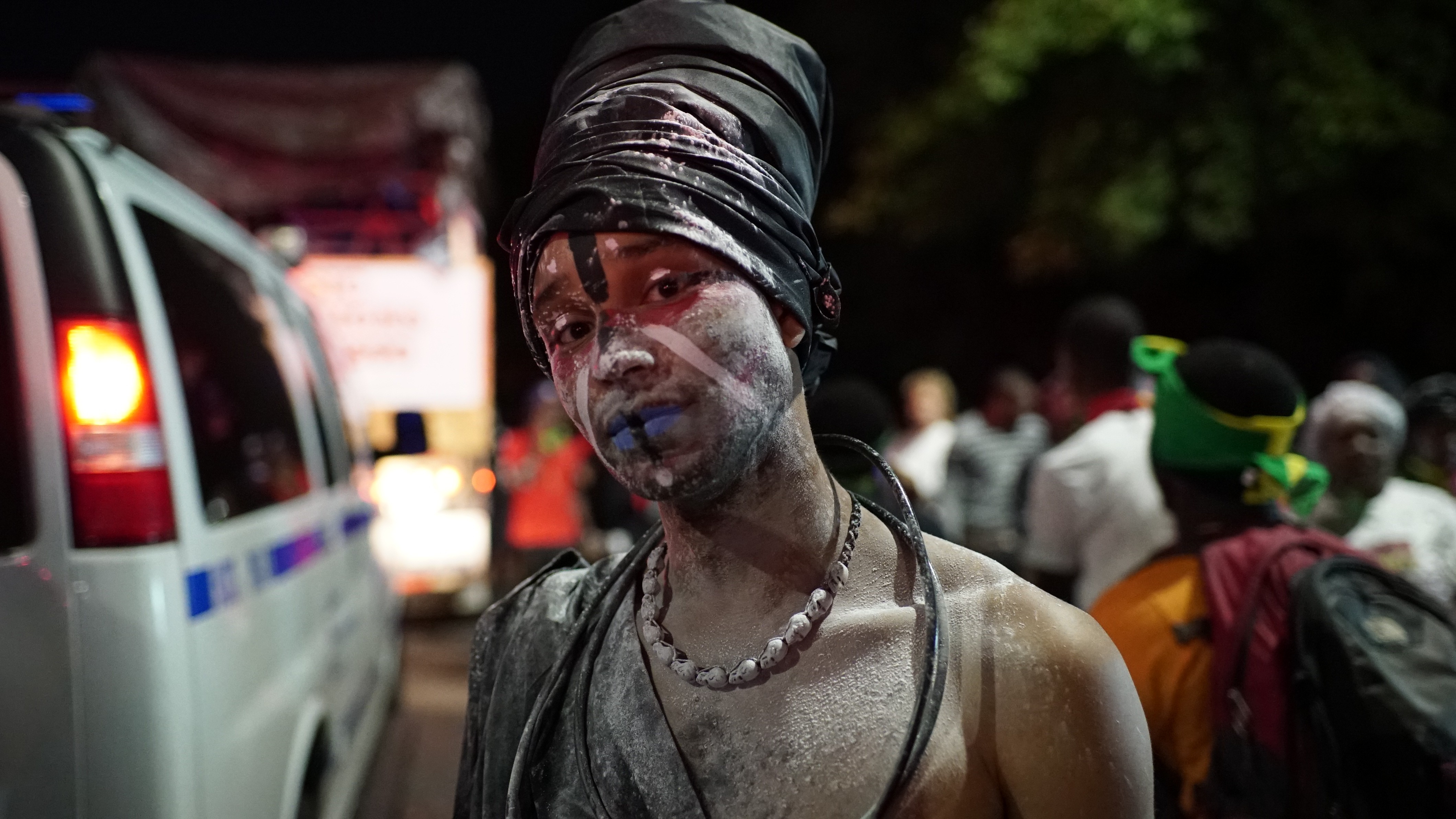There's an unofficial but widely diagnosed syndrome in my hometown of New Orleans known as the post-Mardi Gras blues. A week of merrymaking in the streets, feasts in backyards, and happy hours turned happy days culminates in a citywide block party and a day off work when everywhere else it's just another Tuesday. The day after that, though, is, just another Wednesday. Carnival's very literal carnal celebration, in the Catholic tradition, gives way to the sober, metaphysical reflection of Lent. Even the secular can feel the shift.
Advertisement
The tourists leave, the streets are cleaned, and but for the parade beads hanging like colorful moss from the centuries-old oaks, a stranger might be forgiven for thinking it was a regular week. In the sudden return to routine, the comedown after Fat Tuesday rivals that of any drug. Though now an expatriate, I was born and raised in the Big Easy; I know the drain well.But this year, exactly a week after Mardi Gras, in swept the US Fifth Circuit Court of Appeals with a ruling that refueled a high for many: an affirmation of the city's ability to remove Confederate monuments from public lands after a legal challenge from three conservative-leaning historic preservation societies and the Sons of Confederate Veterans.Black Twitter rejoiced. Bout time was the general sentiment I gathered from local residents. Although the plaintiffs are considering a rehearing, the city's been given clearance to take down three monuments honoring Confederate president Jefferson Davis and the Confederate generals Robert E. Lee and PGT Beauregard.The statues, among others that were not subject to this order, were erected during Reconstruction after local sovereignty was restored to what had been the Confederacy's largest city. The most striking: a 90-foot Tennessee marble pillar topped with a bronze statue of General Robert E. Lee, dedicated during the 1884 Carnival season. Facing north, arms pridefully crossed, Lee stands over a public garden and traffic circle in the Central Business District, where the city's transit arteries meet.
Advertisement
The goal of Lee Circle and other memorials strewn across the South was to glorify the rebel leaders and to establish a counter-narrative in which they were true patriots. "We cannot ignore the fact that the secession has been stigmatized as treason and that the purest and bravest men in the South have been denounced as guilty of shameful crime," the Daily Picayune wrote at the time.But to the people of color who at times made up two thirds of the city's Antebellum population these men were not heroic but villainous. Genteel barbarians who predicated their lives, lined their pockets, and staked their honor upon the right to own other humans—to breed them like cattle, sell them like stocks, rape and beat and kill them at will. This, and much worse, was the nature of slavery.I grew up passing PGT Beauregard's City Park memorial on the way to school every day. Every so often, I'd glance up at the majestic man atop his horse, then remember, no matter how casually or briefly, that he fought to keep people who looked like me enslaved, and still towered above me. The knowledge that my community thought this was OK hovered over my consciousness, looming larger than any monument.On the eve of the town's tricentennial, and in light of the spike in hate crimes around the country, the removal of treasonous racists from the pedestal of city centers seemed common decency as well as common sense. And yet, a cadre of traditionalists resisted.
Advertisement
To remove these symbols, they say, amounts to sweeping history under the rug. This sleight of logic conflates remembering with memorializing. The debate is even more grating for blacks and their allies when the people delivering this deflection are not simply the caricatured rednecks of the liberal imagination, but commentators who can dress their arguments up in polite language.Richard Marksbury of Tulane University, a staunch opponent of the removal effort, called it "cultural cannibalism." The absurd irony of this coinage, representative of the larger anti-removal attitude, is compounded by his invoking the animalistic trait of cannibalism to the actions of blacks trying to end the glorification of people who were actually barbaric.It's ironic too because white Americans have long consumed, commodified, and cannibalized New Orleans culture particularly, and Southern culture generally. There's a gap between who created the popular customs and who profited from them.Watch the VICE documentary on Brooklyn's "Dirty Masquerade":  It was chiefly people of color who mixed European horns with African flow and rhythm and brought the world jazz, funk, and blues—who applied the same creole concoction to develop the foundation for one of the most exquisite culinary milieus in the world. New Orleans is uninhibited in its casual camaraderie and hospitality toward all, no matter how voyeuristic their interest—a legacy, no doubt, of the impossibly strong, gracious women of color who raised generations of families, black and white alike, infusing good humored inner beauty into us all.
It was chiefly people of color who mixed European horns with African flow and rhythm and brought the world jazz, funk, and blues—who applied the same creole concoction to develop the foundation for one of the most exquisite culinary milieus in the world. New Orleans is uninhibited in its casual camaraderie and hospitality toward all, no matter how voyeuristic their interest—a legacy, no doubt, of the impossibly strong, gracious women of color who raised generations of families, black and white alike, infusing good humored inner beauty into us all.

Advertisement
The enrichment was not reciprocal. The fruits of this culture were not equally shared; the people of this culture not equally valued. My mother, a freckled woman lighter than many whites, faced adults picketing her grade school screaming "TWO-FOUR-SIX-EIGHT we don't wanna integrate!" because of an illogical phobia of the rounded tip of her nose, which gave away her blackness. My grandfather, a transplant from Mississippi, grew up in a town where there was no high school for him to attend.This suffering is not so far removed from the present day. And its direct cause was the continuing echo of the Confederate creed these statued men espoused. As a child, I didn't dedicate too much emotion to the ignominy that is Lee Circle, or Jeff Davis Boulevard. Neither did my grandmother, or her grandmother before her. These figures were so deeply embedded into the landscape and geographical vernacular that spending one's time fretting about their presence seemed a waste.Even in the 90s, it was hard to imagine a world in which black people's preferences, not just their basic rights, would be respected in public spaces. "They're dead—and most black people here have less philosophical worries. How to pay the rent, the gas bill," my barber once told me.Certainly New Orleanians face problems more immediate and tangible than Confederate symbols. In 2014, the City That Care Forgot ranked second worst in the country for income inequality. (This puts the city's disparity roughly on par with Zambia when it comes to inequality, according to the CIA's World Factbook.) There are six times as many black households living in poverty than white households.
Advertisement
Back in 2015, when Mayor Mitch Landrieu first recommended the removal, I talked to the politically outspoken actor Wendell Pierce, a homegrown talent known best for his role as Bunk in The Wire. He supported the removal, while making it clear he thought it was not enough."We need to declare them for who they were," he said firmly. "The reason their monuments stand today is because of that very conciliatory momentum [of Reconstruction]. But while we take the Confederates down, let's not allow that to become a distraction. Because policy, not symbols, are the thing that really have an effect on people. Policy."Removing the statues will not remove the racial gaps in wealth, health, and education that plague the region today and that stem from the very institution of human bondage those men atop the monuments fought to preserve.But it will demote these figureheads, who symbolize the material harm the Confederate ideology inflicted on so many citizens of the South, to the museums in which they belong. They will no longer be shrines haunting the city from on high.Follow Talmon Joseph Smith on Twitter.
